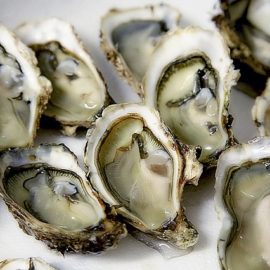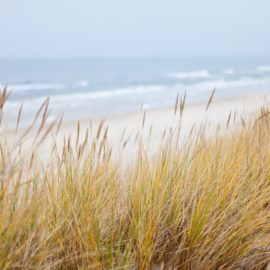
Both Joey and I have done this project and those of you who eat oysters in restaurants have helped!
A program that harnesses New Orleans’ hunger for oysters into constructing artificial reefs has slowly rebuilt itself to more than half its pre-pandemic capacity. The Coalition to Restore Coastal Louisiana and the Chef’s Brigade recently expanded their oyster recycling program to include 13 restaurants that now contribute cast-off shells for the reef-building effort. The program was shuttered, along with many restaurants, during stay-at-home orders and other coronavirus restrictions in 2020. Before the pandemic, when restaurants were packed with tourists and local customers, about 20 restaurants were producing 75 tons of shells each month. The shells are used to build bulwarks against waves, storms and rising seas — factors that contribute to the state’s rapid loss of land. The reefs also foster the growth of new oysters and provide habitat and food for fish, crabs and other marine animals. The shells would otherwise be bound for landfills, where they’d do little but take up space.
nola.com
Take up space? Not the best use of the shells. So lets talk to restaurants.
The restaurants participating in the recycling program are Bourbon House, Clesi’s, Cooter Brown’s, New Orleans Creole Cookery, Deanie’s, Desire, Drago’s Seafood at the Hilton Riverside, Elysian Seafood’s Auction House and St. Roch Market locations, Pêche, Red Fish Grill, Seafood Sally’s, Seaworthy and Superior Seafood. The Coalition to Restore Coastal Louisiana credits the Chef’s Brigade, which ran a meal assistance program during the first wave of the pandemic, for boosting recruitment to recycling program. “Helping to jump-start the oyster shell recycling program was an easy decision for us, and we’re committed to its expansion and success,” said Troy Gilbert, the brigade’s executive director. The program has recycled more than 5,000 tons of oyster shells since 2014 to protect wetlands and coastal communities.
Now we get to the specific project Joey and I worked on.
The coalition is finishing one reef at an ancient Native American mound in Plaquemines Parish. One of the program’s most ambitious projects, an 800-ton wall of shells almost a mile long, was completed last year in Barataria Bay. Oyster shells are collected via purple plastic bins provided to restaurants. A recycling contractor empties the bins three times a week, and the shells are delivered to a curing site in St. Bernard Parish. Starting this fall, volunteers will package the shells into mesh bags for a reef project planned at Pointe-au-Chien near Montegut.
We put the cured shells into plastic meshed bags and then loaded they on a truck. The truck took the bags to a boat where we loaded the boat and went to the site. There some got in the water to receive and place the bags while other stayed on board to pass the bags. It was work but I was in a good group that worked well together.



